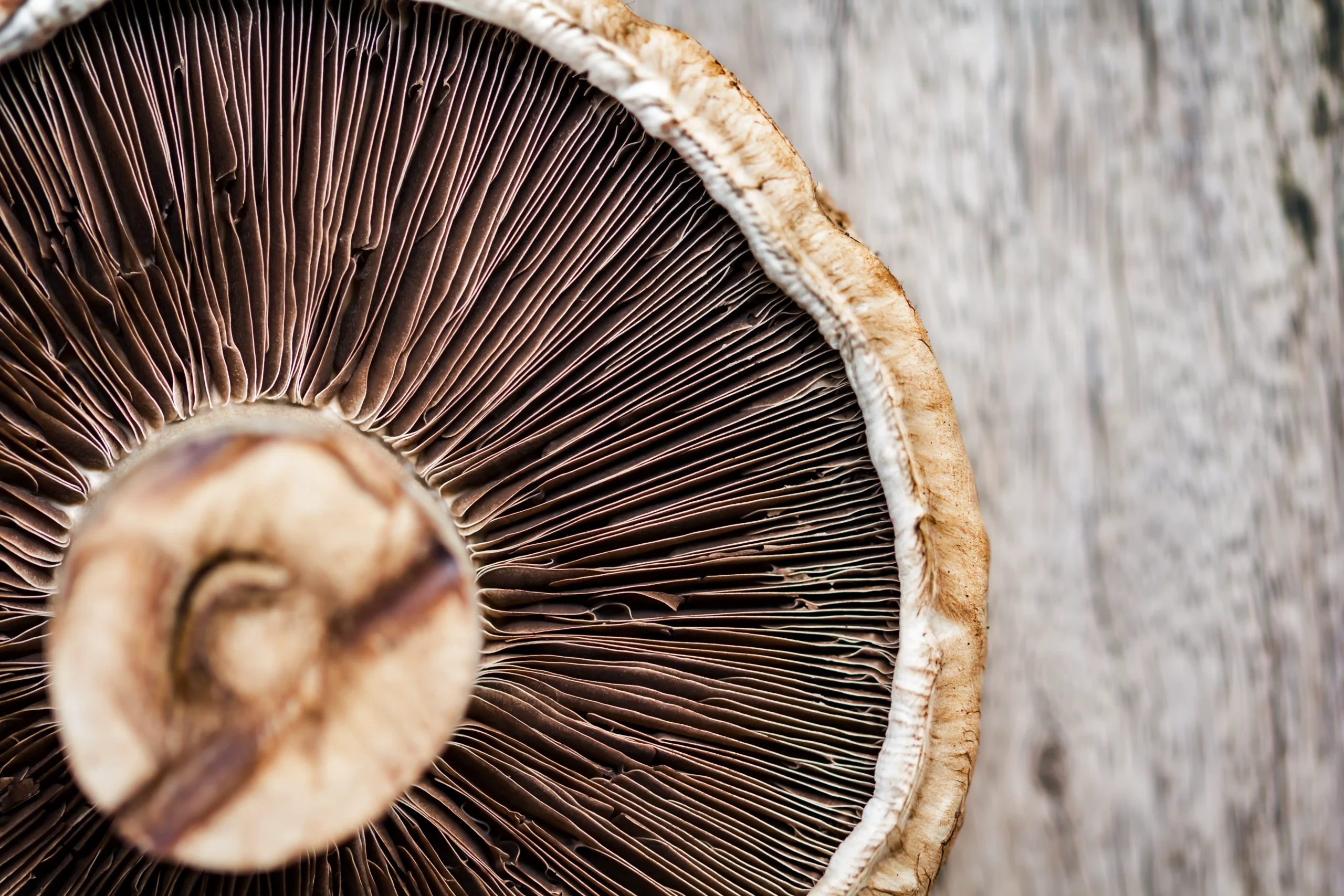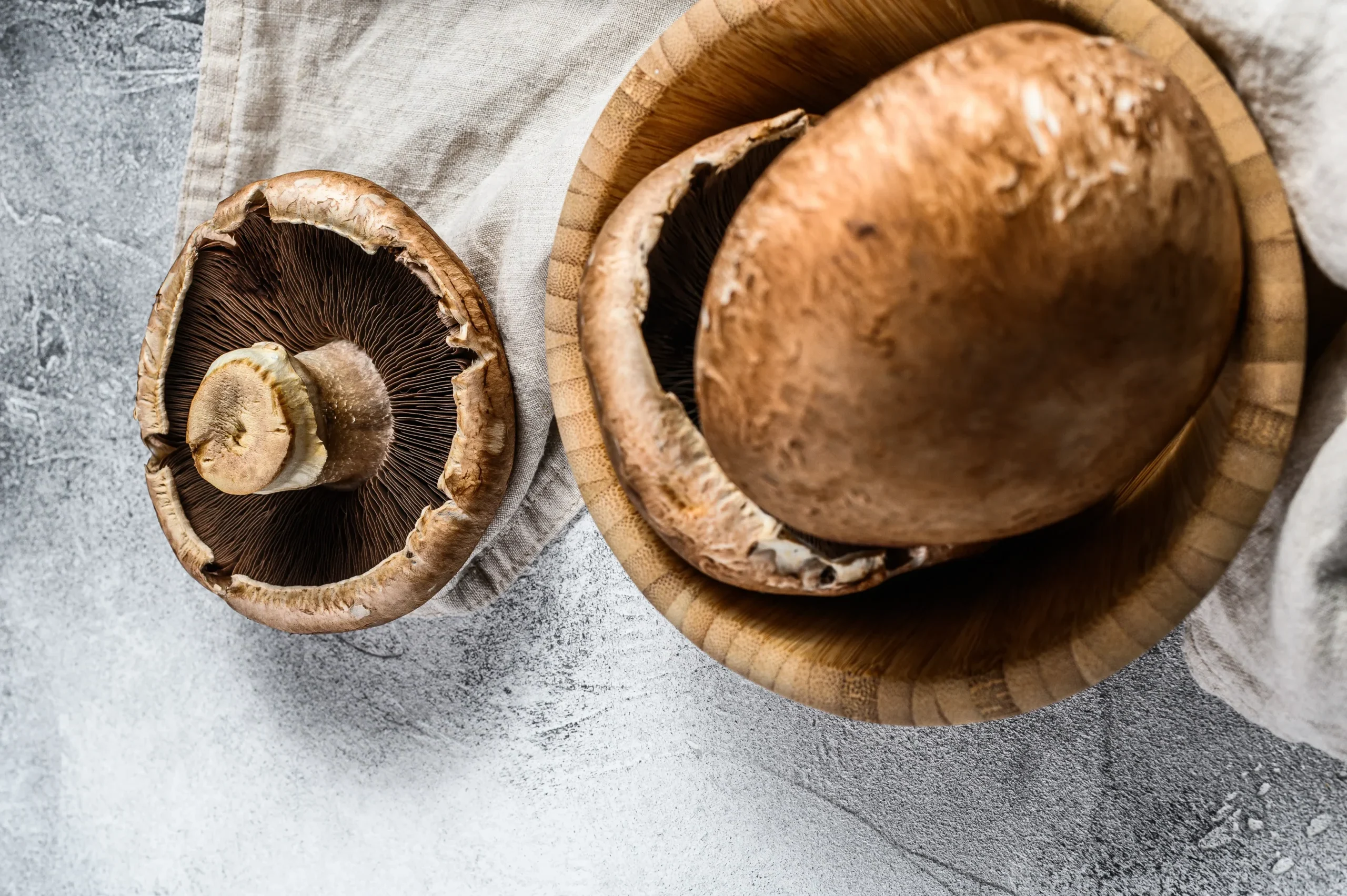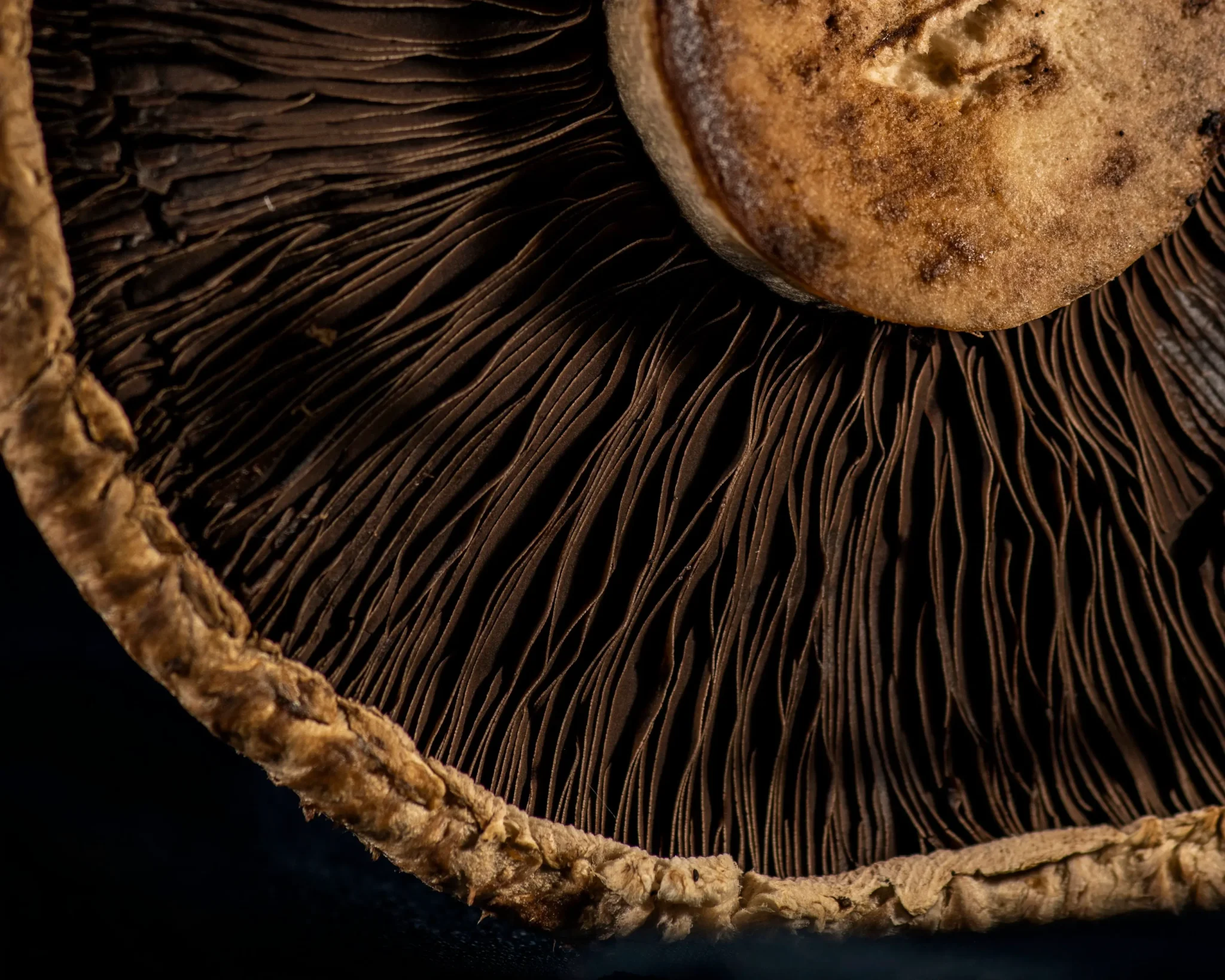Master the art of growing portobello mushrooms with this comprehensive guide covering everything from basic techniques to commercial-scale operations.
Why Growing Portobello Mushrooms is Worth Your Investment
Growing portobello mushrooms represents one of the most rewarding ventures in controlled environment agriculture. Whether you’re a home cultivator seeking fresh, organic produce or an entrepreneur planning commercial mushroom production, understanding the intricacies of portobello cultivation will set you on the path to success.
Portobello mushrooms, scientifically known as Agaricus bisporus, are simply mature cremini mushrooms that have been allowed to grow to full size. Their meaty texture, rich umami flavor, and impressive nutritional profile make them highly sought after in restaurants and households worldwide. The global mushroom market continues to expand, with specialty mushrooms like portobellos commanding premium prices due to their culinary versatility.
This comprehensive guide will walk you through every aspect of growing portabella mushrooms, from understanding their biological requirements to implementing professional-grade environmental controls. We’ll explore both traditional cultivation methods and modern techniques that ensure consistent, high-quality harvests regardless of external conditions.

Understanding Portobello Mushroom Biology and Growth Cycles
The Portobello Lifecycle
Growing portobello mushrooms successfully requires a deep understanding of their unique lifecycle. Unlike plants that grow from seeds, mushrooms develop from spores through a complex process involving multiple distinct phases.
The cycle begins with spore germination, where microscopic spores develop into thread-like structures called hyphae. These hyphae form an interconnected network known as mycelium, which serves as the vegetative body of the fungus. During commercial portabella mushroom growing, cultivators typically start with pre-colonized substrate rather than spores, significantly reducing the time to harvest.
The mycelium phase is crucial for successful portobello mushrooms growing. During this stage, the fungal network spreads throughout the growing medium, breaking down organic matter and accumulating the energy reserves necessary for fruiting. Professional growers understand that robust mycelium development directly correlates with harvest quality and yield.
Fruiting occurs when environmental conditions trigger the formation of mushroom pins, tiny mushroom primordia that develop into mature portobellos. This transition requires precise control of temperature, humidity, air circulation, and lighting – factors we’ll explore in detail throughout this guide.
Portobello vs. Portabella: Understanding the Terminology
Before diving deeper into cultivation techniques, it’s worth clarifying the terminology. “Portobello” and “portabella” refer to the same mushroom, with spelling variations arising from different marketing approaches. Whether you’re focused on growing portobello mushroom or growing portabella mushroom, the cultivation principles remain identical.
These mushrooms are harvested at different maturity stages to create distinct market products. Young mushrooms with closed caps are sold as button mushrooms, partially opened caps become cremini, and fully mature mushrooms with open caps are marketed as portobellos or portabellas. Understanding this progression is essential for timing your harvests correctly.
Essential Equipment and Infrastructure for Portobello Cultivation
Creating the Optimal Growing Environment
Successful portabella mushrooms growing demands precise environmental control. The foundation of any professional operation begins with appropriate infrastructure capable of maintaining stable conditions throughout the cultivation cycle.
Temperature control stands as the most critical factor in portobello mushroom growing. During the spawning phase, temperatures should remain between 75-77°F (24-25°C), while fruiting requires cooler conditions around 60-65°F (15-18°C). This temperature differential triggers the biological switches necessary for healthy mushroom development.
Humidity management proves equally important, with different growth phases requiring specific moisture levels. Spawning requires 95-100% relative humidity, while fruiting performs best at 80-85% humidity. Professional growers invest in sophisticated humidification and dehumidification systems to maintain these precise conditions.
Air Quality and Ventilation Systems
Air quality management represents perhaps the most overlooked aspect of portobello cultivation, yet it’s absolutely crucial for preventing contamination and ensuring healthy mushroom development. During grow portabella mushroom operations, maintaining sterile air conditions can mean the difference between successful harvests and devastating losses.
Fresh air exchange becomes critical during fruiting, as mushrooms require adequate oxygen levels while simultaneously producing significant amounts of CO2. Professional cultivators implement sophisticated ventilation systems that provide consistent air movement without creating drafts that could damage developing mushrooms.
For serious cultivators looking to grow portobello mushroom commercially, investing in professional-grade air filtration systems proves essential. High-quality activated carbon filters effectively remove airborne contaminants, odors, and potential pathogens that could compromise growing conditions. These systems work in conjunction with precision EC ventilators to maintain optimal air circulation patterns throughout the growing space.
Substrate Preparation and Sterilization
The growing medium, or substrate, provides the foundation for healthy mycelium development. Commercial portobello cultivation typically utilizes composted materials including wheat straw, horse manure, chicken manure, and various agricultural byproducts. This compost undergoes a carefully controlled fermentation process that creates the ideal nutritional profile for mushroom growth.
Substrate sterilization represents a critical step in professional growing portabella mushrooms operations. Steam sterilization at 160°F (71°C) for several hours eliminates competing microorganisms while preserving beneficial nutrients. During this process, maintaining proper air circulation with professional ventilation systems ensures even heat distribution and prevents the development of anaerobic conditions.

Step-by-Step Portobello Growing Process
Phase 1: Inoculation and Spawn Running
The journey of growing portobello mushrooms begins with inoculation, where mushroom spawn is introduced to the prepared substrate. Commercial spawn consists of sterilized grain colonized with portobello mycelium, providing a vigorous starting point for cultivation.
During inoculation, maintaining sterile conditions proves absolutely critical. Professional growers often work within controlled environments equipped with HEPA filtration systems to minimize contamination risks. The spawn is mixed thoroughly with the substrate to ensure even distribution and optimal colonization patterns.
Following inoculation, the substrate enters the spawn running phase, where mycelium spreads throughout the growing medium. This process typically takes 14-21 days under optimal conditions. During this period, maintaining consistent temperatures around 75°F (24°C) and high humidity levels promotes vigorous mycelium development.
Air circulation during spawn running requires careful balance. While some air exchange prevents the buildup of metabolic gases, excessive air movement can dry out the substrate surface and impede mycelium growth. Circulation fans positioned to provide gentle air movement without direct drafts help maintain optimal conditions.
Phase 2: Casing and Environmental Adjustment
Once the substrate shows complete mycelium colonization, it’s ready for casing – the application of a thin layer of sterile material that triggers fruiting. Traditional casing mixtures combine peat moss and limestone, though modern cultivators experiment with various organic materials to optimize results.
The casing process marks a critical transition in portabella mushroom growing conditions. Temperatures should gradually decrease to 60-65°F (15-18°C), while humidity levels adjust to 80-85%. This environmental shift signals the mycelium to begin reproductive phase development.
During this transition, air quality management becomes increasingly important. The developing mushroom pins are particularly susceptible to airborne contaminants that can cause discoloration, deformation, or complete failure to develop. Professional operations utilize integrated filtration systems to maintain pristine air quality throughout the fruiting environment.
Phase 3: Pinning and Early Development
Mushroom pinning represents one of the most exciting phases in growing portobello mushrooms. Small white pins begin appearing on the casing surface 7-10 days after environmental conditions change. These pins will develop into mature portobellos over the following 10-14 days.
Environmental precision during pinning determines final mushroom quality. Temperature fluctuations can cause pin abortion, while humidity variations affect cap development and texture. Professional growers implement automated environmental control systems that maintain conditions within narrow tolerances.
Light plays a supporting role during this phase, with low-intensity lighting helping direct mushroom orientation and preventing etiolation. Many commercial operations use LED systems that provide appropriate light spectrums while generating minimal heat.
Phase 4: Mushroom Development and Harvesting
As pins develop into recognizable mushrooms, environmental management focus shifts to supporting healthy cap expansion and maintaining firm texture. During this critical growth period, portabella mushrooms growing requires increased attention to air circulation and humidity control.
Proper air movement prevents the development of bacterial blotch and other surface blemishes that can significantly impact market value. However, excessive air circulation can cause rapid moisture loss, resulting in tough, leathery mushrooms with poor culinary characteristics.
Harvesting timing affects both yield and quality. Button-stage mushrooms harvested early bring premium prices but lower overall yields. Portobellos harvested at full maturity provide maximum weight but require careful handling to prevent damage to the delicate caps.
Professional harvesting techniques involve cutting mushrooms at the base rather than pulling, which prevents substrate disturbance and allows for potential secondary flushes. Clean cutting tools and proper sanitation procedures prevent the introduction of pathogens that could affect subsequent crops.
Advanced Environmental Control for Commercial Operations
Implementing Professional Climate Systems
Scaling up from hobbyist to commercial portobello mushroom growing requires investment in sophisticated environmental control systems. Modern mushroom farms utilize computer-controlled systems that monitor and adjust temperature, humidity, CO2 levels, and air circulation automatically.
These systems integrate multiple sensors throughout the growing space, providing real-time data on environmental conditions. Advanced algorithms adjust heating, cooling, humidification, and ventilation systems to maintain optimal conditions regardless of external weather fluctuations.
For operations serious about growing portabella mushrooms at commercial scale, investing in modular controlled environment systems provides scalability and reliability. Professional solutions like integrated growing compartments offer precisely calibrated systems designed specifically for mushroom cultivation, with all environmental controls factory-tuned for optimal performance.
Air Filtration and Contamination Prevention
Commercial mushroom cultivation faces constant contamination pressure from airborne bacteria, molds, and other microorganisms. Professional air filtration systems provide the first line of defense against these threats, ensuring consistently clean growing conditions.
Multi-stage filtration systems combine different filter types to address various contamination sources. Pre-filters remove larger particles and extend the life of downstream filtration components, while HEPA filters eliminate microscopic contaminants that could compromise mushroom quality.
For operations requiring maximum contamination control, specialized filters designed for biological applications provide additional protection. These systems work in conjunction with positive pressure environments to prevent contaminated air infiltration during daily operations.
Energy Efficiency and Sustainability
Modern mushroom operations increasingly focus on energy efficiency and environmental sustainability. Advanced ventilation systems with heat recovery capabilities capture waste heat from exhaust air to pre-warm incoming fresh air, significantly reducing energy consumption.
EC ventilation systems offer superior energy efficiency compared to traditional AC motors, with variable speed controls that adjust airflow based on actual environmental conditions rather than running at constant speeds.
Integrated automation systems optimize energy usage by coordinating heating, cooling, and ventilation systems to minimize overall energy consumption while maintaining precise environmental conditions required for successful portabella mushrooms growing.
Troubleshooting Common Portobello Growing Challenges
Contamination Issues and Prevention
Contamination represents the most significant threat to successful mushroom cultivation. Understanding common contamination sources and implementing prevention strategies can save substantial time and investment in growing portobello mushroom operations.
Trichoderma, a green mold, appears as one of the most common contaminants in mushroom cultivation. This aggressive fungus spreads rapidly through substrates, often overwhelming mushroom mycelium and destroying entire crops. Prevention relies on proper substrate sterilization, sterile inoculation techniques, and maintaining clean air quality throughout the growing process.
Bacterial blotch manifests as brown or yellow spots on mushroom caps, significantly reducing market value. This condition typically results from poor air circulation, excessive humidity, or contaminated water sources. Professional growers implement comprehensive sanitation protocols and utilize advanced air filtration systems to minimize bacterial contamination risks.
Cobweb mold presents another serious threat, appearing as fluffy white growth that can quickly spread across substrate surfaces. Unlike mushroom mycelium, cobweb mold grows rapidly and has a distinctly different texture. Early detection and immediate removal of affected areas, combined with improved air circulation, help control cobweb mold outbreaks.
Environmental Stress Symptoms
Environmental stress manifests in various ways during portobello cultivation, often providing early warning signs of suboptimal growing conditions. Understanding these symptoms allows growers to make corrective adjustments before problems become severe.
Pin abortion, where developing mushroom pins fail to mature, typically indicates environmental stress such as temperature fluctuations, inadequate humidity, or poor air quality. Professional growers monitor environmental conditions continuously and implement automated control systems to prevent these fluctuations.
Mushroom deformation, including irregular cap shapes or stems, often results from poor air circulation or inconsistent environmental conditions. Implementing proper ventilation systems with circulation fans positioned to provide uniform air movement helps prevent these issues.
Slow growth rates may indicate substrate nutritional deficiencies, suboptimal temperatures, or inadequate air exchange. Regular monitoring of CO2 levels and implementation of proper ventilation systems ensure mushrooms receive adequate oxygen for healthy development.
Yield Optimization Strategies
Maximizing yields in portabella mushroom growing requires attention to numerous factors throughout the cultivation cycle. Professional growers implement systematic approaches to optimize every aspect of production from substrate preparation through harvest.
Strain selection significantly impacts potential yields, with some varieties performing better under specific environmental conditions. Working with reputable spawn suppliers and maintaining detailed production records helps identify the most productive strains for your specific growing conditions.
Substrate quality and preparation methods directly affect mycelium vigor and subsequent mushroom production. Professional operations invest in high-quality composting facilities and maintain strict quality control standards to ensure consistent substrate performance.
Environmental control precision throughout the growing cycle prevents stress that can reduce yields. Implementing professional-grade climate control systems with redundant sensors and backup systems ensures consistent conditions even during equipment maintenance or failure.
Scaling Up: From Home Growing to Commercial Production
Planning Commercial Mushroom Operations
Transitioning from small-scale portobello mushroom growing to commercial production requires careful planning and significant investment in infrastructure. Successful commercial operations combine biological expertise with business acumen to create profitable, sustainable enterprises.
Market analysis forms the foundation of commercial planning. Understanding local demand, pricing structures, and competition helps determine appropriate production scales and target markets. Many successful operations begin with restaurant sales before expanding to retail distribution networks.
Facility design considerations include workflow optimization, contamination control, and scalability. Professional mushroom farms utilize modular designs that allow for expansion as markets develop, while maintaining the environmental control necessary for consistent production.
For serious commercial ventures, investing in complete controlled environment systems provides the reliability and consistency required for large-scale operations. Professional growing compartments offer fully integrated solutions with precise environmental controls, optimized airflow patterns, and contamination prevention systems designed specifically for commercial cultivation.
Quality Control and Standardization
Commercial portabella mushrooms growing demands rigorous quality control procedures to ensure consistent product quality and food safety compliance. Professional operations implement comprehensive protocols covering every aspect of production from raw materials through final packaging.
Substrate quality control begins with incoming material inspection and continues through composting and sterilization processes. Regular testing for moisture content, pH levels, and nutritional parameters ensures substrates meet specifications for optimal mushroom production.
Environmental monitoring systems provide continuous data on temperature, humidity, CO2 levels, and air quality throughout growing areas. This data helps identify trends and potential issues before they affect mushroom quality or yields.
Harvest and post-harvest handling procedures significantly impact final product quality. Professional operations implement cold chain management, proper packaging systems, and traceability protocols to ensure products reach consumers in optimal condition.
Automation and Technology Integration
Modern commercial mushroom operations increasingly rely on automation and technology integration to improve efficiency, consistency, and profitability. These systems reduce labor costs while providing more precise environmental control than manual systems.
Automated environmental control systems monitor conditions continuously and make adjustments in real-time to maintain optimal growing conditions. These systems integrate heating, cooling, humidification, dehumidification, and ventilation controls to provide comprehensive climate management.
Irrigation and fertigation systems deliver precise amounts of water and nutrients based on crop development stages and environmental conditions. These systems reduce water waste while ensuring mushrooms receive optimal nutrition throughout the growing cycle.
Data management systems collect and analyze production data to identify optimization opportunities and track performance metrics. This information helps growers make informed decisions about process improvements and resource allocation.

Specialized Growing Techniques and Innovations
Organic and Sustainable Production Methods
Growing portobello mushrooms organically requires additional attention to substrate sourcing, contamination prevention, and environmental management. Organic certification demands documented procedures and regular inspections to ensure compliance with organic standards.
Organic substrate preparation utilizes only approved materials and composting methods. This often requires longer composting periods and more intensive management to achieve proper substrate conditioning without synthetic additives or treatments.
Integrated pest management (IPM) strategies replace synthetic pesticides with biological controls and environmental management techniques. Proper air filtration and environmental control systems play crucial roles in preventing pest and pathogen issues in organic operations.
Sustainable production methods extend beyond organic certification to include energy efficiency, water conservation, and waste minimization. Professional growers implement closed-loop systems that recycle nutrients and minimize environmental impact while maintaining high production standards.
Specialty Market Production
Specialty markets for gourmet and medicinal mushrooms continue expanding, creating opportunities for growers willing to invest in specialized production techniques. These markets often command premium prices but require higher levels of quality control and consistency.
Baby portobello production targets high-end restaurants seeking consistent, small-sized mushrooms for specific culinary applications. This requires precise harvest timing and specialized handling procedures to maintain product specifications.
Value-added processing creates additional revenue streams from standard portobello production. Dried mushrooms, mushroom powders, and prepared foods extend shelf life while capturing higher profit margins.
Research partnerships with universities and agricultural extension services provide access to new cultivation techniques and market opportunities. Many successful commercial operations participate in research projects that advance mushroom cultivation knowledge while providing competitive advantages.
Technology Integration and Future Trends
Emerging technologies continue transforming commercial mushroom production, offering new opportunities for efficiency improvements and quality enhancement. Smart sensors, artificial intelligence, and automated systems represent the future of commercial cultivation.
Internet of Things (IoT) sensors provide real-time monitoring of environmental conditions with remote access capabilities. Growers can monitor their operations from anywhere while receiving alerts about potential issues before they become problems.
Artificial intelligence and machine learning algorithms analyze production data to identify patterns and optimize growing conditions automatically. These systems continuously improve performance based on historical data and real-time conditions.
Vertical growing systems maximize production per square foot while reducing land requirements. These systems require sophisticated environmental controls but offer significant advantages in urban environments with limited space availability.
Economic Considerations and Business Planning
Investment Requirements and Financial Planning
Successful commercial portobello mushroom growing requires substantial initial investment and careful financial planning. Understanding all costs involved helps ensure adequate capitalization and realistic profitability projections.
Infrastructure costs include facility construction or renovation, environmental control systems, and specialized equipment. Professional growing systems represent significant investments but provide the reliability and efficiency necessary for commercial success.
Operating costs encompass substrate materials, spawn, utilities, labor, and ongoing maintenance. Energy costs for heating, cooling, and ventilation can represent substantial portions of operating budgets, making energy-efficient systems crucial for long-term profitability.
Market development costs include marketing materials, sales efforts, and relationship building with potential customers. Many successful operations invest heavily in market development during their first years to establish customer bases and brand recognition.
Risk Management and Insurance
Commercial mushroom operations face various risks that can significantly impact profitability. Understanding these risks and implementing appropriate management strategies protects investments and ensures business continuity.
Crop insurance provides protection against losses from contamination, equipment failure, or environmental disasters. While not all insurers offer mushroom-specific coverage, specialized agricultural insurance providers understand the unique risks associated with controlled environment agriculture.
Equipment insurance covers specialized environmental control systems, refrigeration equipment, and other essential infrastructure. Given the critical nature of environmental control in mushroom production, equipment failures can result in total crop losses without proper backup systems.
Business interruption insurance provides income protection during facility repairs or reconstruction following covered losses. This coverage helps maintain cash flow during recovery periods when production may be temporarily halted.
Market Development and Customer Relations
Building successful markets for portabella mushrooms requires understanding customer needs and developing relationships with key buyers. Different market segments have varying requirements for quality, consistency, and pricing.
Restaurant sales often provide the foundation for new commercial operations, offering higher prices for consistent quality products. Developing relationships with chefs and restaurant buyers requires regular communication and reliable delivery schedules.
Retail distribution requires different approaches, including proper packaging, labeling, and logistics capabilities. Retail buyers often demand liability insurance, product traceability, and compliance with food safety regulations.
Direct-to-consumer sales through farmers markets, community-supported agriculture (CSA) programs, or online platforms provide opportunities for premium pricing while building brand recognition. These channels require additional marketing investments but offer higher profit margins.
Conclusion: Mastering the Art of Portobello Cultivation
Growing portobello mushrooms successfully combines scientific precision with practical experience, requiring dedication to both biological understanding and environmental management. Whether you’re beginning with small-scale home production or planning commercial operations, the principles outlined in this guide provide the foundation for consistent, high-quality harvests.
The key to successful portabella mushroom growing lies in understanding that mushrooms are not plants – they require completely different environmental conditions and respond to different management strategies. Temperature control, humidity management, air quality, and contamination prevention form the cornerstones of professional mushroom cultivation.
Professional-grade environmental control systems represent essential investments for serious growers. These systems provide the consistency and reliability necessary for commercial success while reducing labor requirements and improving product quality. From air filtration to precise ventilation control, modern cultivation technology enables previously impossible levels of environmental precision.
As the market for specialty mushrooms continues expanding, opportunities for dedicated growers continue increasing. Success requires combining biological expertise with business acumen, market understanding, and commitment to continuous improvement. The growers who invest in proper infrastructure, maintain rigorous quality standards, and adapt to changing market conditions will find portobello cultivation both profitable and rewarding.
The journey from growing your first portobello mushroom to operating a successful commercial facility requires patience, persistence, and proper planning. But with the knowledge gained from this guide and commitment to excellence, you’re well-equipped to join the ranks of professional mushroom cultivators producing high-quality portobellos for discerning customers worldwide.
Ready to Start Your Professional Portobello Growing Operation?
Transform your mushroom cultivation dreams into reality with professional-grade environmental control systems. Whether you’re planning a small commercial operation or scaling up existing production, CarbonActive’s specialized growing solutions provide the precision and reliability you need for consistent, high-quality harvests.
Discover how professional environmental control systems can revolutionize your mushroom growing operation:
- Complete growing compartments with integrated climate control
- Professional air filtration systems for contamination prevention
- Energy-efficient ventilation solutions for optimal air circulation
- Modular designs that scale with your growing business
